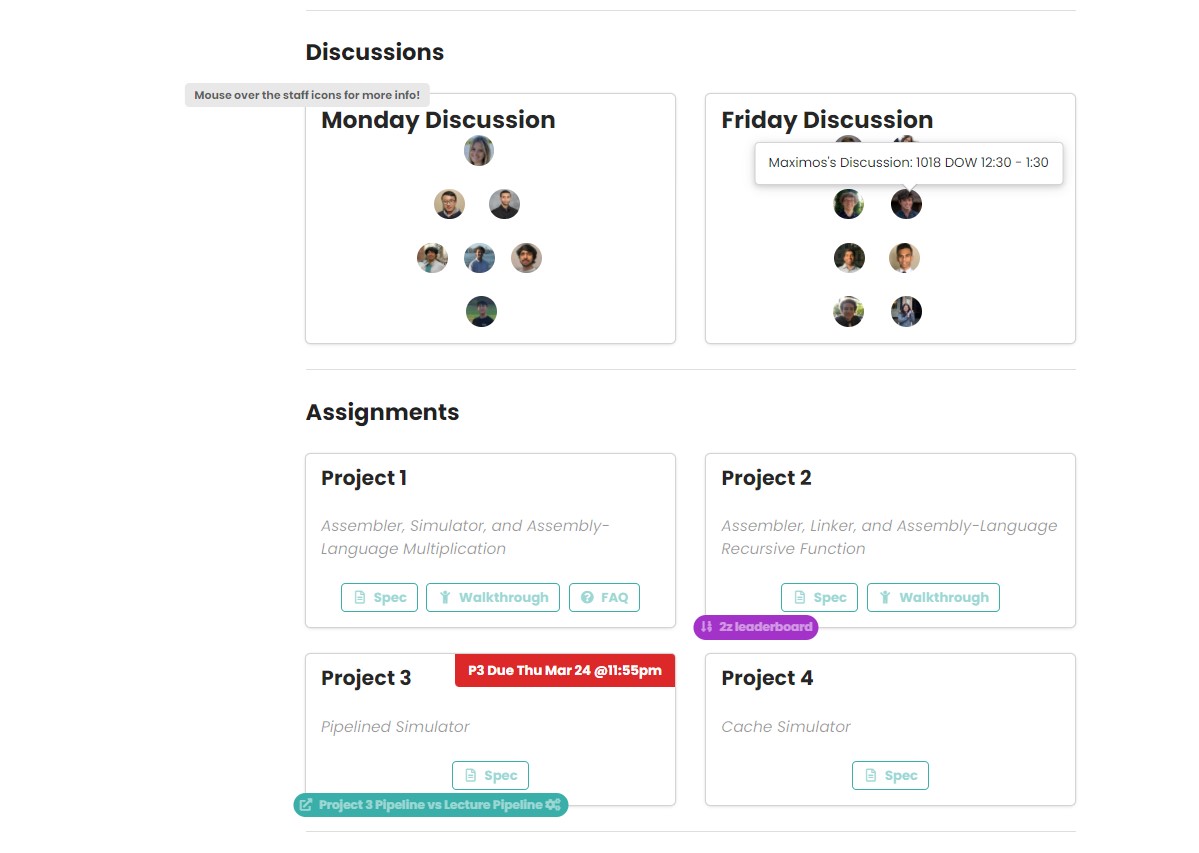Hello, my name is Maximos Nolan
I'm a Software Engineer
I'm a Software Engineer with experience in operating systems, distributed systems, machine learning, and computer architecture.
Download CV
About Me
I'm Maximos Nolan: Software Engineer
I'm a recent graduate from the University of Michigan Studying Computer Science Engineering, Data Science, and Business Administration. Currently I am working at Bloomberg as a Software Engineer in Trading and Analystics. Please reach out if you have any questions!
Email : maximosnolan@gmail.com
Linkedin : shorturl.at/pNS57
Education : University of Michigan
Majors : Computer Science and Business Administration
Phone : 269 930 4061
Citizenship: United States
Github : github.com/maximosnolan
Modern C++ (20 onword)
Golang
Java
C
Python
Verilog HDL
CUDA C & C++
Rust
Javascript/Typescript
CMake
Education
2019 - 2023
Bachelor's of Science in Engineering: Computer Science
University of Michigan College of Engineering
Relivant Course work:
• Distributed Systems
• Operating Systems
• Advanced Operating Systems
• Machine Learning
• GPU arch and programming
• Computer Organization
• Data Structures and Algorithms
• Foundations of Comp Sci
• Linear Algebra
• Calculus I - IV
• Discrete Statistics and analysis
2019 - 2023
Bachelor's of Business Administration
University of Michigan Ross School of Business
Relivant Course work:
• Financial Accounting
• Managerial Accounting
• Business Law and Ethics
• Operations Management
• Revenue Management
• Behavioral Economics
• Micro & Macro Econ
Experience
2023 - 2023
Bloomberg
Software Engineer
• Dynamic Trade Flow Management System:
Engineered and deployed a rate limiter at Bloomberg, preventing system slowdowns by strategically
managing trade floods and ensuring optimal client performance.
• Pipeline Enhancement with RabbitMQ Integration:
Spearheaded modifications to the trading pipeline, integrating RabbitMQ for streamlined communication and dynamic trade routing based on firm-specific metrics. This initiative facilitated essential metric
gathering, supporting the establishment of Service Level Agreements (SLAs) for enhanced performance.
2023 - 2023
Riot Games
Software Engineer Intern
• Content Management System Development:
Engineered a dynamic content management system that significantly boosted player engagement by
efficiently notifying users about new in-game content, store offerings, and game modes
• Thematic Backgrounds:
Designed an artist-friendly system enabling parameter definition for activating thematic backgrounds,
coupled with a seamless integration of parallaxing technology.
2022 - 2022
Aamazon Web Services
Software Engineer Intern
• IAM Execution Role Generator:
Engineered a role permission generator in Amazon Cloud Formation, optimizing role creation with accurate permissions for third-party extensions.
Significantly decreased on-boarding time and boosted adoption rate.
• Permission Validation:
Developed and implemented a robust simulation to validate customer permissions for third-party extensions within Cloud Formation. The simulation effectively informed customers of their
eligibility to use the extensions, streamlining the decision-making process and enhancing user experience.
• Contract Tests:
Implemented publisher extension validation in CloudFormation, improving customer transparency and understanding of extension functionality.
2021 - 2023
University of Michigan
Computer Organization Instructional assistant
• Exam Creation:
Led the design team for the EECS 370 midterm and final exam taken by over 800 students.
Routinely assessed current learning objectives and integrated questions and feedback from other course staff.
• Discussion Leader:
Led weekly discussions of 30+ Students. Created various online resources to reinforce project
development knowledge (ARM Assembly Guides, C workshops).
2021 - 2021
IBM
Software Engineer Intern
• Machine Learning Storage Vulnerability System:
Developed python-based collaborative
filtering algorithm to compare various organizations in order to determine proper solutions to increase their storage
resiliency, security, and operational efficiency within the scope of HPA/HPC software.
• Storage Resiliency Assessment:
Lead the development of an automated flash storage resiliency assessment by
utilizing past organizations resiliency vulnerabilities and developing an internal ranking alongside a recommendation
of an IBM solution to eliminate the persisting problem
• RDMA InfiniBand (IB) Documentation:
Developed material and taught several full-time solutions specialists
about IB RDMA capabilities. Developed technical documentation for IBM storage solutions which incorporate IB
Projects
Paxos Based RSM
Designed a replicated key value service that is replicated using Paxos. Implementation included designing a fully functional paxos algorithm to gain consensus on a generic operation. Additionally, I designed the interface for clients and a Paxos RSM to communicate with these services. The paxos Key Value RSM communicates with paxos itself to propose client operations and gain a quorum on sed operation.
• Designed in Golang
Primary Backup Replication
Designed a key value service that is replicated over a primary and backup. Implementation included designing a fully functional view service that keeps the absolute state of the current primary and backup as well as the abstractions for a client to communicate with the view service. Implemented a replicated key value service using the view service.
• Designed in Golang
Virtual Memory Manager
Created a virtual memory manager which supports both file backed and swap backed pages. Processes address spaces are maintained by the pager and syscalls are administered through the pager interface. Processes may fork child processes with a non-empty virtual arena as well as create their own address spaces. A customizable memory size allows for pages to be evicted by the kernel using a clock queue to control eviction orders. Enable bits are also controlled by the kernel to dictate read and write permissions as well as the residency of a given physical page.
• Designed in C++ 17
Thread Manager
Created a thread manager to administer the creation, lifetime, and execution of various thread bodies on a multi-core system. Thread Library has support for conditional variables, mutexes, as well as generic threads. Inner process interrupts are also supported by the library, alongside various thread lifetime management operations, such as yield and join.
• Designed in C++ 17
Pipelined RISC-V CPU
Designed a pipelined RISC-V CPU compatable with data hazards in verilog HDL. RAW, WAR and WAW hazards are all avoided by this pipelined implementation. Branch predictions are static and assumed not taken to allow for optimizations to CPI and runtime.
• Designed in Verilog HDL
Support Vector Machine Multiclass Classifier
Developed a python algorithm to train a polynomial kernel Support Vector Machine to map sample text reviews to a label map consisting of positive and negative attributes while optimizing the hyperparameters. Calculated and developed multiple different models which maximized different metrics for a multiclass SVM using a one vs one approach in order to correctly classify reviews on a rating scale of 1 to 5.
• Designed in Python 3
Neural Network multiclass classifier
Developed a python algorithm to train a 7 layer Convolutional Neural Network with 2 pooling layers. The classifier was trained on a subset of 2000 images of 10 various dogbreeds and validated on 500 images with an accuracy of 89.5%. For training, I used greyscale images of the dogs as well as distorted/rotated images to generate various training material to ensure a high accuracy score.
• Designed in Python 3
Custom optional Library
Designed an 'optional' class in C++ to support optional data types [an extention of std::optional] Supporting generic optional type wrapping and unwrapping with overloaded operators, portability with many std::algorithm functions such as a optional safe std::accumulate, and Container safe and typesafe operations with optional generic data
• Designed in C++ 20
Whiskey Reviews
Welcome to my whiskey haven! Here, you'll find a collection of my passion project—whiskey reviews. Embarking on this journey a few years ago, my fascination with the intricacies of various distillations led me to dive deep into the art of analyzing the unique notes that distillers expertly infuse into their creations.
Hover over each bottle for more information 🥂

Eagle Rare 10 Year
Histroy
Eagle Rare, initially a 101-proof ten-year-old Kentucky straight bourbon whiskey crafted by master distiller Charles L. Beam under Seagram, made its debut in 1975 as one of the last bourbon brands before the rise of 'small-batch bourbons.' Over the years, various companies, including the Old Prentice Distillery in Frankfort, KY, have been involved in the production and marketing of Eagle Rare. In March 1989, the Sazerac Company, a family-owned American producer based in New Orleans and the parent company of five distilleries, acquired Eagle Rare from Seagram. The distillery, originally named the George T. Stagg Distillery and later renamed the Buffalo Trace Distillery, is now under the ownership of Sazerac.
Nose
Initially, I didn't get much on the nose. I'm more biased towards higher ABV whiskeys that tend to have more pronounced noses. Eagle Rare, unfortunately, isn't an exception to this rule. There are hints of toasted marshmallow, citrus, molasses, and vanilla, but they are pretty muted.
Mid Palete
Being a Sazerac product, the mash bill has that distinct buttery, corny mid-palate. This is extremely similar to Buffalo Trace; however, the mid-palate is more eventful, and there is less of an aggressive cornish taste to it. In fact, the mash bill for Eagle Rare uses 5% less corn than Buffalo Trace. Minor notes of cinnamon, citrus, and honey stand out.
Finish
The finish hugs your mouth with a strong lingering presence. Extremely dry and pronounced almond notes.
Value
For $90, there are far better whiskies out there. While this is a staple that I had to try, and given the fact that it's relatively hard to come by, I had to give it a shot. I'd say if you're at a bar, order a tasting. Only buy this if you really enjoy Buffalo Trace.
Overall Thoughts
I wouldn't say I'm disappointed, but I am unimpressed. This feels like a slightly better version of Buffalo Trace, but for $50 more than Buffalo Trace's MSRP. Try this if you're at a bar or if a friend offers you a taste.
Eagle Rare
- ⏰ Aged 10 years
- 🍾 90 Proof
- 💰 MSRP $89.99
- 🌾 Buffalo Trace Mashbill #1
- 🍶 Sazerac Company Product
Contact Me
Have any questions or want to connect?
Please reach out!
Call me!
269 930 4061
Location
United States
maximosnolan@gmail.com
Website
www.maximosnolan.com
shorturl.at/pNS57



